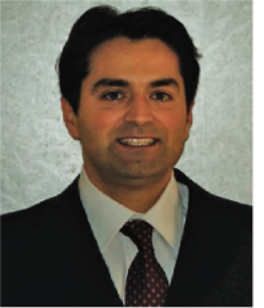 Biograph: Antonio De Maio (S'01-A'02-M'03-SM'07-F'13) was born in Sorrento, Italy, on June 20, 1974. He received the Dr.Eng. degree (with honors) and the Ph.D. degree in information engineering, both from the University of Naples Federico II, Naples, Italy, in 1998 and 2002, respectively. From October to December 2004, he was a Visiting Researcher with the U.S. Air Force Research Laboratory, Rome, NY. From November to December 2007, he was a Visiting Researcher with the Chinese University of Hong Kong, Hong Kong. Currently, he is a Professor with the University of Naples Federico II. His research interest lies in the field of statistical signal processing, with emphasis on radar detection and optimization theory applied to radar signal processing. Dr. De Maio is a Fellow member of IEEE and the recipient of the 2010 IEEE Fred Nathanson Memorial Award as the young (less than 40 years of age) AESS Radar Engineer 2010 whose performance is particularly noteworthy as evidenced by contributions to the radar art over a period of several years, with the following citation for ``robust CFAR detection, knowledge-based radar signal processing, and waveform design and diversity''. Dr. De Maio is a co-editor of the recent book “Modern Radar Detection Theory”, Scitech publishing 2015.
Biograph: Antonio De Maio (S'01-A'02-M'03-SM'07-F'13) was born in Sorrento, Italy, on June 20, 1974. He received the Dr.Eng. degree (with honors) and the Ph.D. degree in information engineering, both from the University of Naples Federico II, Naples, Italy, in 1998 and 2002, respectively. From October to December 2004, he was a Visiting Researcher with the U.S. Air Force Research Laboratory, Rome, NY. From November to December 2007, he was a Visiting Researcher with the Chinese University of Hong Kong, Hong Kong. Currently, he is a Professor with the University of Naples Federico II. His research interest lies in the field of statistical signal processing, with emphasis on radar detection and optimization theory applied to radar signal processing. Dr. De Maio is a Fellow member of IEEE and the recipient of the 2010 IEEE Fred Nathanson Memorial Award as the young (less than 40 years of age) AESS Radar Engineer 2010 whose performance is particularly noteworthy as evidenced by contributions to the radar art over a period of several years, with the following citation for ``robust CFAR detection, knowledge-based radar signal processing, and waveform design and diversity''. Dr. De Maio is a co-editor of the recent book “Modern Radar Detection Theory”, Scitech publishing 2015.
Title: Constant False Alarm Rate Technique
Abstract: The objective of this tutorial is to teach the theory of Constant False Alarm Rate (CFAR) techniques according to a rigorous academic style based on the use of statistical decision theory.
Intended Audience:
This course is suitable both for young students who are approaching radar signal processing and for radar practitioners needing a rigorous and academic point of view on the fundamentals of CFAR algorithms.
Detailed Description:
1.CFAR Techniques
1.1.The Constant False Alarm Rate (CFAR) Concept
1.2.Basic CFAR Architecture
1.2.1.1.Cell Averaging (CA-CFAR)
1.2.1.2.CFAR Loss
1.2.1.3.Masking Effects
1.2.1.4.Clutter Edges
1.2.1.5.Robust CFAR Processors
1.2.1.5.1.1.Greatest Of CFAR (GO-CFAR)
1.2.1.5.1.2.Smallest OF CFAR (SO-CFAR)
1.2.1.5.1.3.CFAR Techniques Based on Order Statistics (OS)
1.2.1.5.1.4.Trimmed-Mean and Censored CFAR, OS-CFAR.